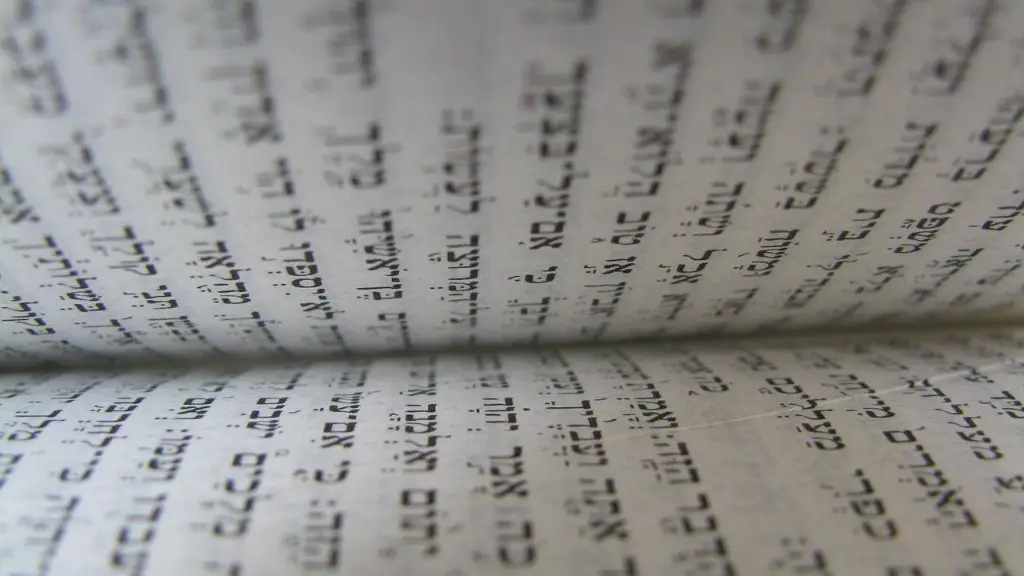Introduction
The practice of circumcision has long been of extreme importance in Judaism. This ceremony is one of the oldest religious customs known and is still practiced today, with countless reasons attributed to its significance. In many ways, circumcision is an integral part of the family traditions of Judaism. It is an act of physical and spiritual renewal, a coming of age for a young man, and a symbol of an ancient covenant between the Jewish people and their god.
Biblical Origins
The tradition of circumcision can be traced back to the time of Abraham, the patriarch of the Jewish people. In Genesis, 17:9-14, it is said that God told Abraham: “This is my covenant, which you shall keep, between Me and you and your offspring after you: Every male among you shall be circumcised. You shall be circumcised in the flesh of your foreskins, and it shall be a sign of the covenant between Me and you.” This is said to be the basis for the circumcision practice in Judaism.
The Meaning of Circumcision in Judaism
Circumcision is understood to represent a covenant between God and the Jewish people. It serves as a physical symbol of this covenant, and a reminder to follow God’s teachings. It is believed that circumcision is a sign of trusting in God and of readiness to fulfill divine commandments. In addition, circumcision is thought to represent a Jewish man’s responsibility for his religiosity, and for fulfilling all the mitzvot.
Modern Significance
In modern times, the celebration of circumcision, or Brit Milah, continues to be an important part of the Jewish tradition. For an adult male to be circumcised is a sign of readiness to keep the covenant and to observe major religious laws. For a baby boy, circumcision ceremonies reflect the joy and contentment surrounding the birth of a Jewish son, and is a sign of the parents’ commitment to raise the child as an observant Jew.
Religious Requirements
The religious requirements surrounding circumcision are mentioned in the Torah. According to Jewish law, circumcision is a requirement for belonging to the Jewish people and a covenant with God. Circumcision should be performed on a child that is 8 days old, usually in the home of the child. In addition, there are specific religious requirements for the items used in the ceremony, such as the knife and the cup for the wine.
Health Benefits
Beyond its religious significance, circumcision can have health benefits as well. Some studies have suggested that circumcised men are less likely to be infected with some sexually transmitted diseases, and are at less risk for some forms of cancer. However, it is important to note that there is still some debate regarding the efficacy of circumcision as a method for reducing the risk of these diseases.
Controversy
The practice of circumcision is not without controversy. There are some who feel that it is a procedure that is done without the consent of the child and without medical necessity. There has also been some evidence that circumcision can cause complications, including excessive bleeding and infection.
Respect and Consent
Ultimately, it is important that circumcision is based on mutual respect and consent. The decision to circumcise should only be taken after proper consultation with doctors and religious leaders, and should only be done when both the parents and the child are in agreement.
Psychological Challenges
Circumcision can also be a complicated procedure psychologically, as it is a life-long physical change with both positive and negative implications. Failing to properly understand the implications of circumcision can lead to difficulties later in life. As such, it is important to ensure that both parents and the child receive proper counseling and education prior to proceeding with the procedure.
Social Implications
The social implications of circumcision can vary significantly from culture to culture. For example, in some cultures, circumcision is seen as a sign of manhood and is expected of all men. In other cultures, circumcision may be seen as a personal choice and not necessary for one to be considered a man. It is important to understand the social implications of circumcision in one’s particular culture and how it affects one’s perceptions of themselves and of others.
Women’s Perspectives
Circumcision is traditionally seen as a male procedure, but it is important to understand women’s perspectives as well. Women may have a different understanding of the reasons behind a circumcised penis, or their own feelings towards the circumcision of their son. Taking the time to understand women’s perspectives on the procedure can help couples to have a more meaningful and fulfilling conversation about the implications of circumcision.
Alternative Practices
In addition to traditional procedures for circumcision, there are alternative practice’s available for Jewish families. Organizations such as Brit Shalom and Brit Ahava practice alternative circumcision ceremonies that are non-invasive and focus less on the physical aspects of the procedure, and more on the psychological and social. This can be a great option for families who would still like to celebrate the life of their son, but who may not be comfortable with the traditional circumcision rite.
Conclusion
The practice of circumcision is an ancient one, and has long been an important part of the Jewish tradition. It is a physical symbol of the ancient covenant between God and the Jewish people, as well as a reminder of some of the other important precepts of Judaism. Although not without controversy, circumcision can have a great deal of spiritual, social, and physical significance in the lives of Jewish families. It is important that families approach the decision with care and understanding, and explore all their options prior to making a final decision.

